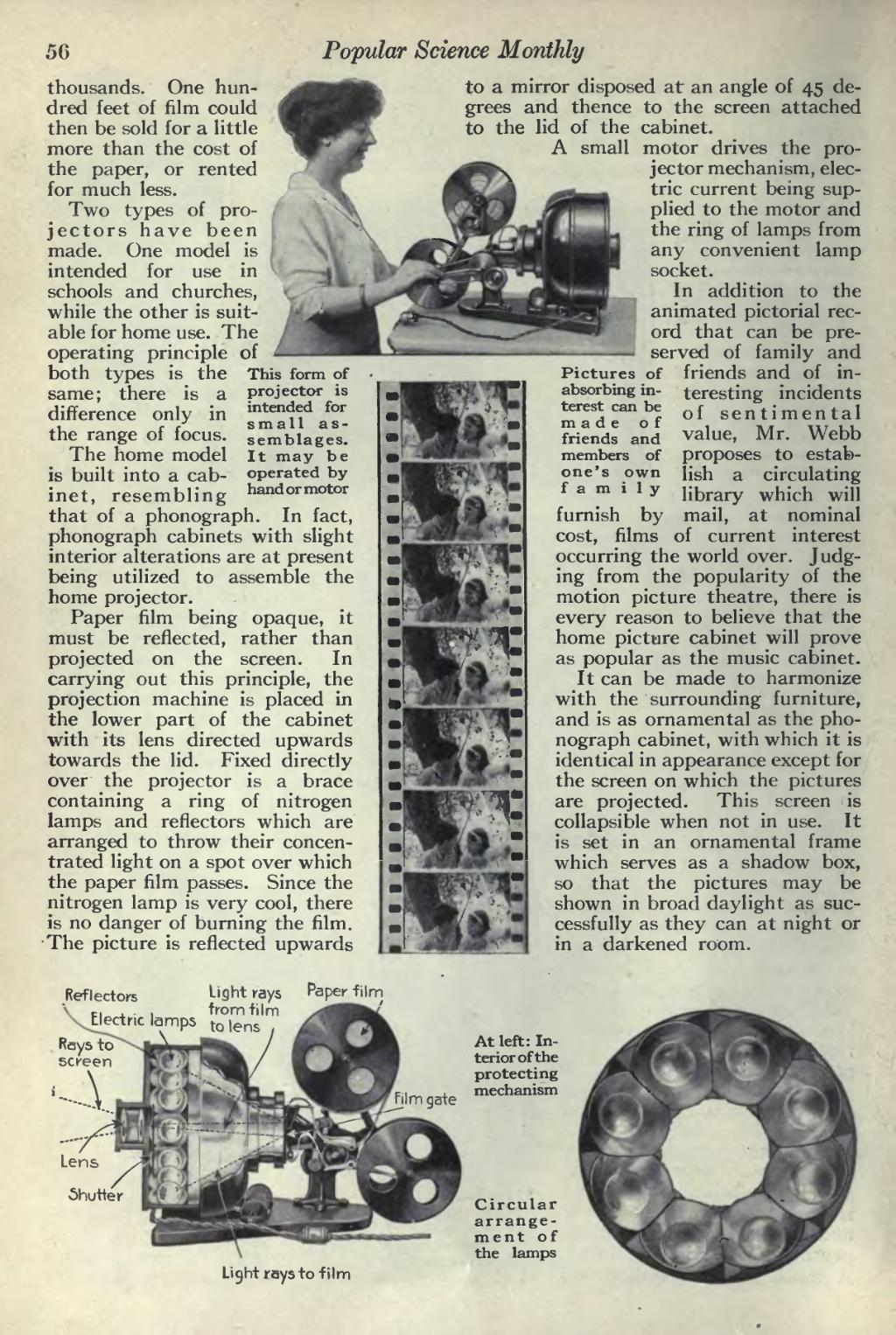56
thousands. One hun- dred feet of film could then be sold for a little more than the cost of the paper, or rented for much less.
Two types of pro- jectors have be< made. One model is intended for use in schools and churches, while the other is suit- able for home use. The operating principle of both types is the This form of same; there is a difference only in the range of focus.
The home model is built into a cab- inet, resembling that of a phonograph. In fact, phonograph cabinets with slight interior alterations are at present being utilized to assemble the home projector.
Paper film being opaque, it must be reflected, rather than projected on the screen. In carrying out this principle, the projection machine is placed in the lower part of the cabinet with its lens directed upwards towards the lid. Fixed directly over the projector is a brace containing a ring of nitrogen lamps and reflectors which are arranged to throw their concen- trated light on a spot over which the paper film passes. Since the nitrogen lamp is very cool, there is no danger of burning the film. The picture is reflected upwards
��Popular Science Monthly
���to a mirror disposed at an angle of 45 de- grees and thence to the screen attached to the lid of the cabinet.
A small motor drives the pro- jector mechanism, elec- tric current being sup- plied to the motor and the ring of lamps from any convenient lamp socket.
In addition to the I animated pictorial rec- 1 ord that can be pre- served of family and of friends and of in- teresting incidents of sentimental value, Mr. Webb proposes to estab- lish a circulating library which will furnish by mail, at nominal cost, films of current interest occurring the world over. Judg- ing from the popularity of the motion picture theatre, there is every reason to believe that the home picture cabinet will prove as popular as the music cabinet. It can be made to harmonize with the surrounding furniture, and is as ornamental as the pho- nograph cabinet, with which it is identical in appearance except for the screen on which the pictures are projected. This screen is collapsible when not in use. It is set in an ornamental frame which serves as a shadow box, so that the pictures may be shown in broad daylight as suc- cessfully as they can at night or in a darkened room.
��Reflectors
��Light cays Paper film
���Light rays to film
�� �
